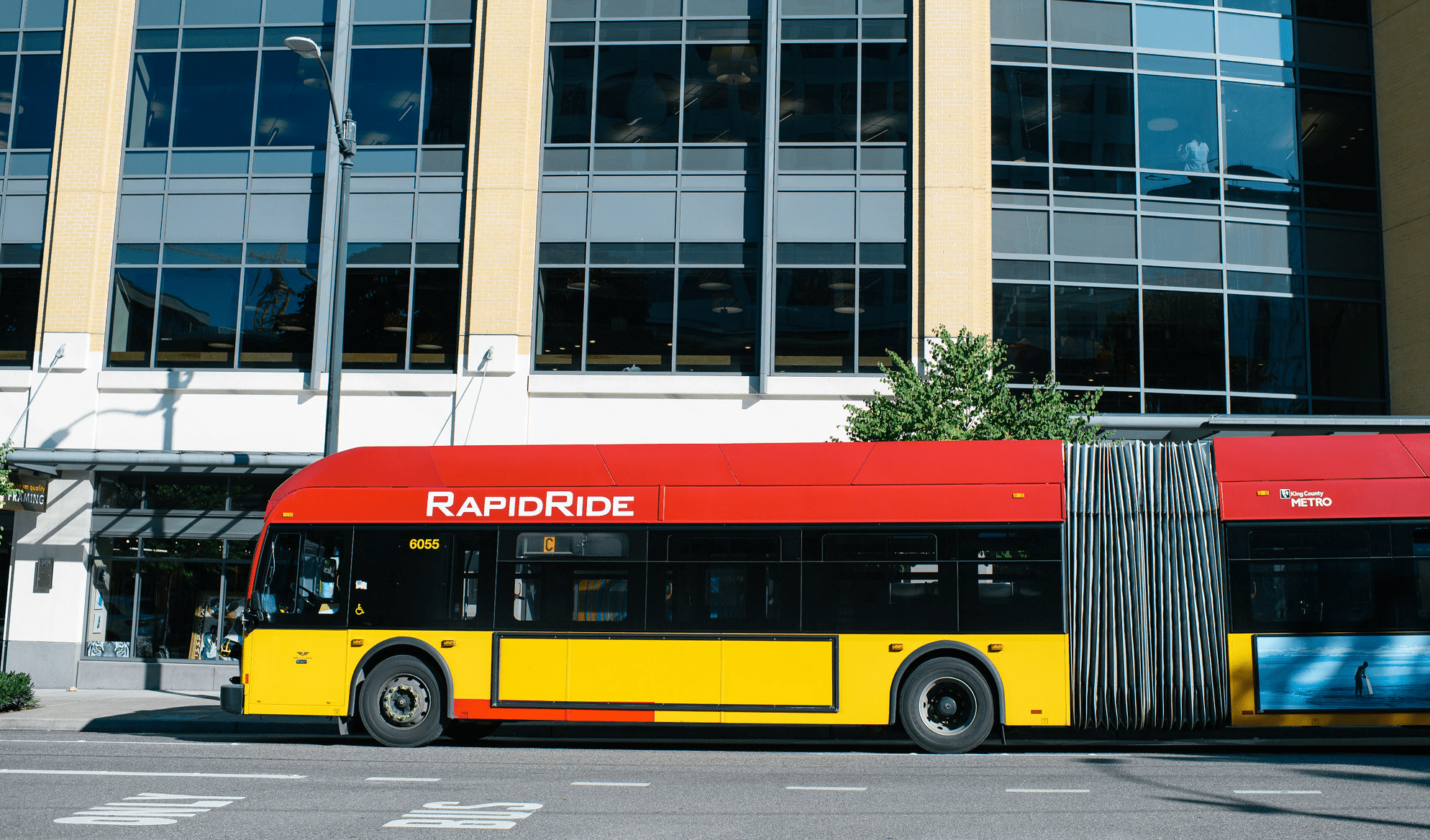 Photo of a RapidRide bus in Seattle. Photo: SDOT
Photo of a RapidRide bus in Seattle. Photo: SDOT On Monday, March 28, the U.S. Department of Transportation’s Federal Transit Administration (FTA) recommended allocating $60 million to Seattle’s RapidRide J Line project. The grant supports modernizing and expanding Seattle’s public transit system. This recommendation is a critical milestone for the project and the City. It signals the project is on track to receive a grant from the FTA’s Capital Investment Grants Small Starts Program (see page 74). If awarded, the City of Seattle will have the funding to complete the RapidRide J Line project by 2026.
The RapidRide J Line project is a partnership between the City of Seattle and King County Metro. The project upgrades the current Route 70 to a RapidRide corridor connecting downtown and the Belltown, South Lake Union, Eastlake, and University District neighborhoods. In addition to improving bus reliability, the project installs new bus stations, repaves streets, adds new protected bike lanes, and improves pedestrian accessibility.

The RapidRide J Line is part of a series of investments to support mobility in this area, thanks to the voter-approved Levy to Move Seattle. Last year, we opened the new Fairview Ave N Bridge, a vital part of the RapidRide J Line route. It is one of many major transit and sustainability investments the Levy is funding. Other projects include the RapidRide G Line on Madison St, the RapidRide H Line on Delridge Way SW, and other Transit-Plus Multimodal Corridors throughout Seattle.
Quotes from Seattle and King County leaders:
“On behalf of the City of Seattle, we thank our federal partners in Congress and the U.S. Department of Transportation for prioritizing transportation funding for our growing region. Coupled with funding from the Levy to Move Seattle that voters approved in 2015, the recommended $60 million grant would fully fund the RapidRide J Line project. Access to transit and safe streets are the things that make a difference in people’s life. This type of infrastructure makes our city welcoming to people of all ages and abilities and connects them to work, schools, recreation, and culture – creating One Seattle. This is a critical milestone and signals the project is on track to get a Small Starts Grant. Thank you, President Biden, Senator Murray, Senator Cantwell, Congresswoman Jayapal, Congressman Smith, and Secretary Buttigieg, for your commitment to expanding public transit systems.”
–Seattle Mayor Bruce Harrell
“We are getting ready to transform one of Seattle’s busiest and fastest growing transit corridors, and our partners in Washington D.C. are helping make RapidRide J Line a reality. This investment is a great reminder of what we can do when we work together. These federal funds will allow Metro and the City of Seattle to prepare for a future where faster, dependable transit service encourages people to get from behind the wheel and on to one of our green transit options anywhere they need to go.”
–King County Executive Dow Constantine
“RapidRide J Line provides new travel options for people who live, work, and play in Seattle. The route connects downtown Seattle with the vibrant and growing neighborhoods of Belltown, South Lake Union, Eastlake, and the University District. We continue working with the community, finalizing environmental review, and completing the design, leading to us breaking ground as soon as 2023. This is one of many major transit projects SDOT will complete thanks to Seattle voters and incredible partners at all levels of government, especially King County Metro. We are making transit a more reliable, sustainable option for people traveling in and through Seattle.”
–Kristen Simpson, Seattle Department of Transportation Interim Director
The RapidRide J Line will replace the Route 70, which has become a lifeline for students going to the University of Washington and a vital link connecting downtown to the growing neighborhoods of South Lake Union and Eastlake. This recommended grant will expand access to education and jobs for communities across King County.
–Terry White, King County Metro General Manager

The U.S. Congress approves their budget during the last quarter of the year and then the Federal Transit Administration can execute a grant agreement with us. Currently the project is in environmental review and design, and is expected to start construction as soon as 2023.
